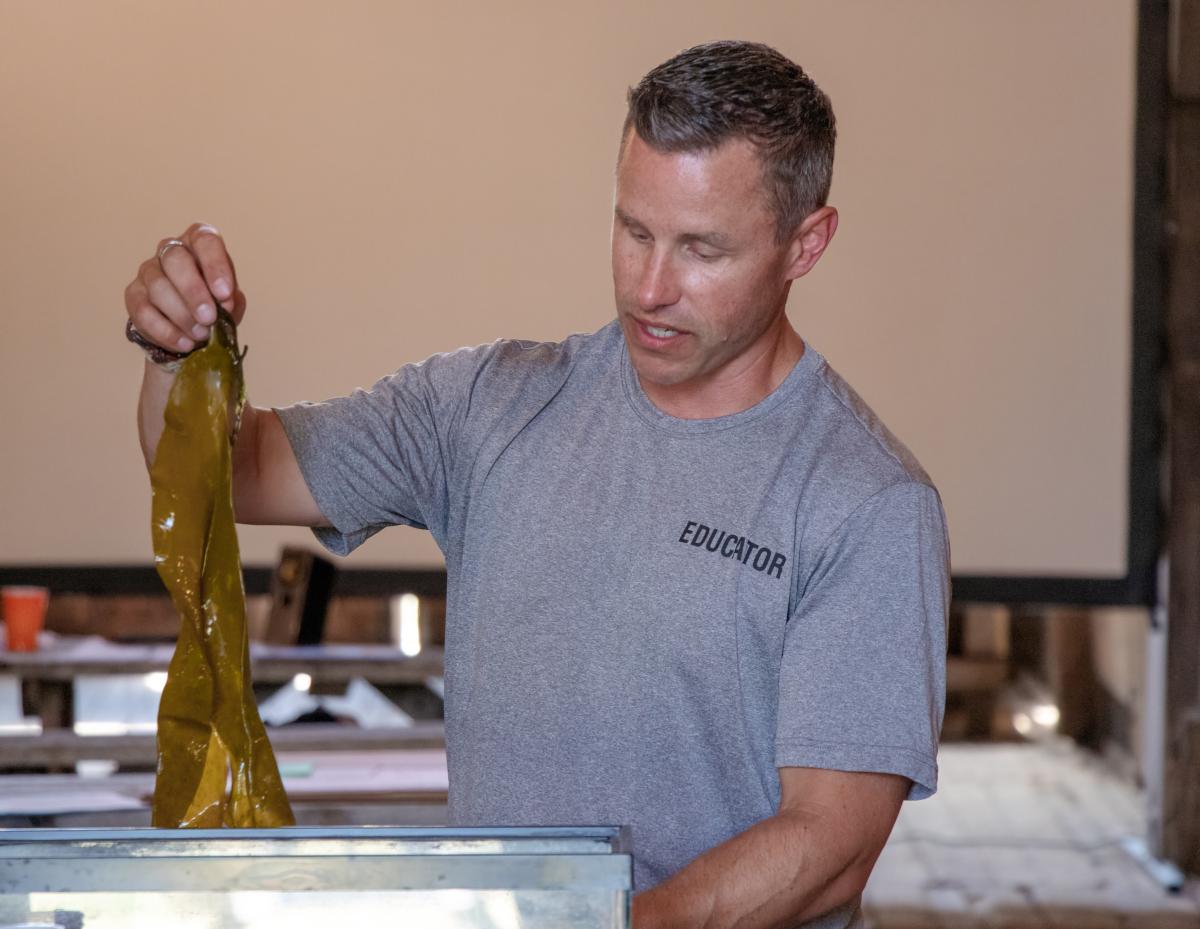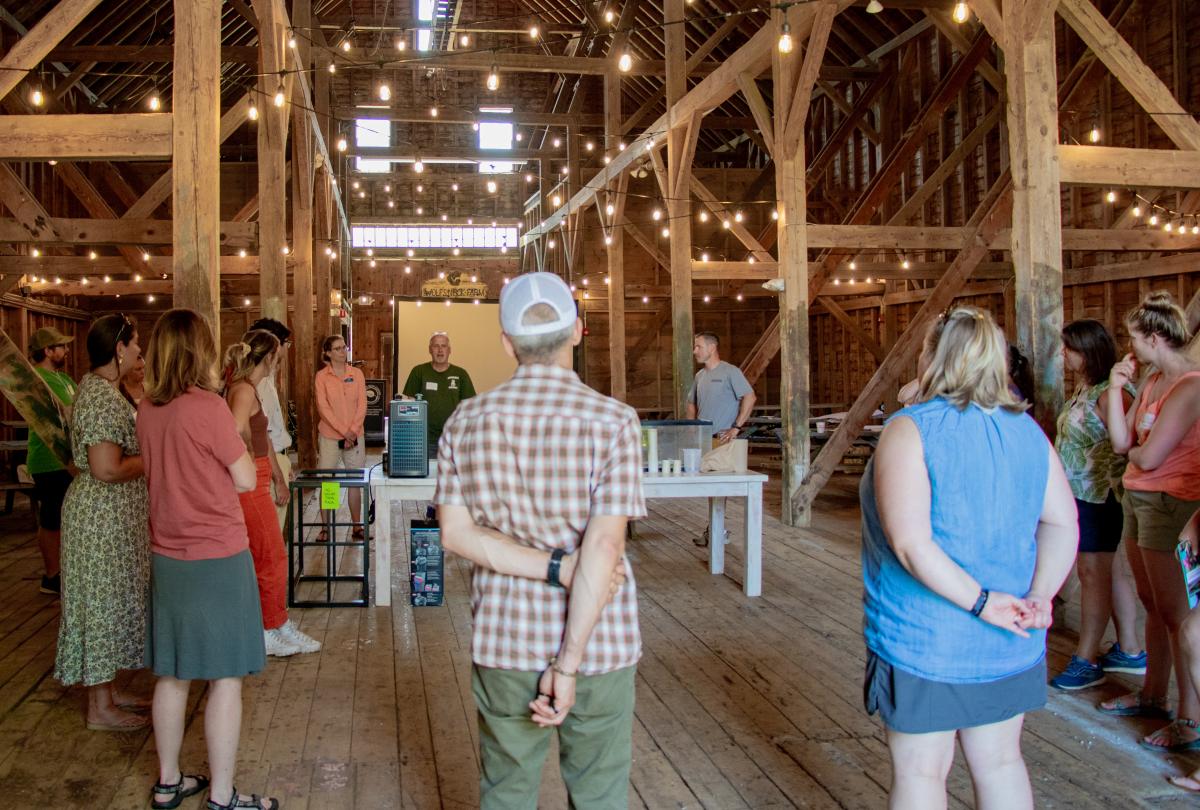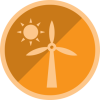When It Comes to Aquaculture in the Classroom, Connection Is Everything

eeBLUE: Harvest Stories
This post was written by Jaclyn Robidoux, Marine Extension Associate at Maine Sea Grant.
Project partners include the University of Maine, Maine Sea Grant, University of Maine Cooperative Extension.

Aquaculture is a powerful and dynamic classroom tool that teachers can use to connect their students to communities, while practicing inquiry-based learning and aligning with advanced educational standards. Aquaculture education incorporates crosscutting concepts, like chemistry, biology, physics, and mathematics, to teach about complex systems that affect both our communities and environment. In Maine, aquaculture is a growing component of our working waterfronts, and teachers and sea farmers are working together to link classrooms to the coast, create new educational programming, and build job pathways on the water for younger generations.
Since 2019, Maine Sea Grant and partners have organized Aquaculture ME!, a state-wide collaborative network focused on building aquaculture education in Maine classrooms by providing support and professional connections for educators. The network represents educators and administrators from over 30 K–12 schools, aquaculture businesses, research institutions, colleges and universities, and educational and environmental organizations. Aquaculture ME! has created an industry-education partnership that also empowers sea farmers to actively build aquaculture literacy and social license in their communities.
Through this network, teachers attend professional development days and learn about shellfish, seaweed, and finfish farming and workshop with peers about how aquaculture can engage their students. Teachers have implemented in-classroom seaweed and shellfish nurseries and partnered with local industry, municipalities, and other schools to grow out these species while aligning this learning within existing curriculum. And there is momentum to see this work grow.
However, incorporating aquaculture learning into the classroom isn’t always easy. Teachers may have limited time and funding to take on new projects, face logistical challenges and liability in getting their students to the coast or on the water, and lack the technical and administrative support to start and sustain aquaculture learning systems and programs in the classroom. Oftentimes, the schools that have the most robust aquaculture education programs are those located closest to the coast and with the financial resources and support of administrators and parent organizations. In Maine our communities are socioeconomically diverse and closely linked to geography, ranging from coastal tourist towns to small inland or island communities supported by natural resource industries. Maine is one of the most rural states in the U.S., and this presents unique challenges when it comes to developing and implementing educational programs that meet the needs of many different schools.

So, how can we bridge the gap? As we build this network, how can we make new aquaculture learning opportunities accessible to more than just the coast? The reality is this will take time, tenacity, collaboration, and small steps toward a larger goal.
In July, we hosted educators, researchers, and sea farmers for a professional development day and long-awaited in-person celebration, supported by the eeBLUE Aquaculture Literacy Mini-Grant program. By engaging teachers from different schools and districts from across the state, we’ve taken steps toward envisioning what new and accessible aquaculture education looks like.
From those schools that want to do aquaculture education but face challenges getting students to the coast, we thought about opportunities for functional in-classroom aquaculture systems, virtual technical support from colleges and university partners, and deeper connections with sea farmers who have access to the equipment, farm sites, permits, and boats that may be difficult for schools to obtain on their own. When pursuing aquaculture in the classroom, connection is key.
By promoting cross-sector engagement and establishing a platform for these connections through Aquaculture ME!, we hope that teachers will feel excited and empowered to share and develop aquaculture learning with their students and communities.
Through the NOAA-NAAEE Collaborative Aquaculture Literacy mini-grants program, NAAEE supports partnerships sharing the mutual aquaculture literacy goals of the National Oceanic and Atmospheric Administration’s (NOAA) Office of Education, National Marine Fisheries Service (NMFS), and National Sea Grant Office. These mini-grants provide informal learning institutions (e.g., aquariums), aquaculture industry (e.g., shellfish, finfish, seaweed farmers), and NOAA partners with support for the co-development of innovative educational experiences that explore aquaculture topics and support the engagement and advancement of public aquaculture literacy.






